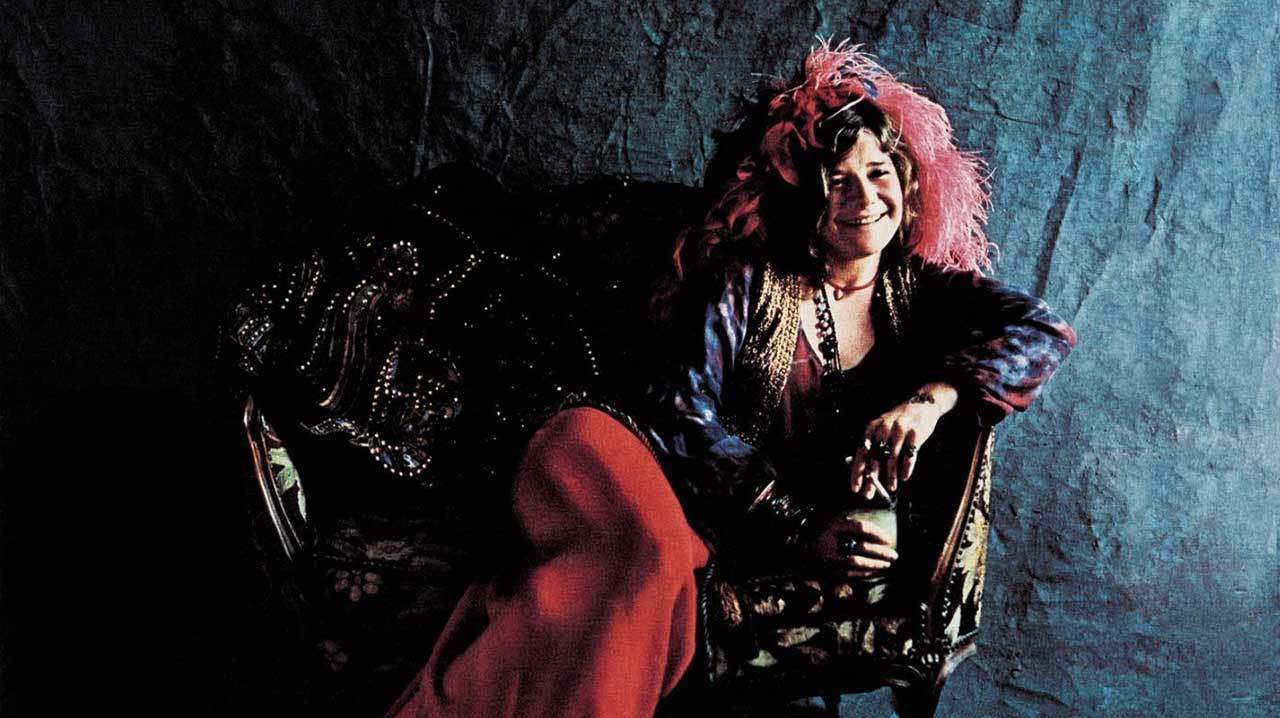Released three months after her death, there’s no way of knowing whether Pearl was the album Janis Joplin intended to make. But from her chart-topping cover of Kris Kristofferson’s Me And Bobby McGhee to the startling a capella Mercedes Benz — recorded just a fortnight before the accidental heroin overdose that killed her in October 1970 — it’s an album that has graced best-of lists since its release in early 1971.
Listen to Pearl…
Every week, Album of the Week Club listens to and discusses the album in question, votes on how good it is, and publishes our findings, with the aim of giving people reliable reviews and the wider rock community the chance to contribute. Join the group here.
Here’s what we learned about Pearl…
BACKGROUND
- Joplin’s backing band for Pearl were the Full Tilt Boogie Band, brought in by producer Paul Rothschild to replace the musicians used on the more chaotic I Got Dem Ol’ Kozmic Blues Again Mama! They included pianist Richard Bell and guitarist John Till, both Canadians who’d played with Ronnie Hawkins after the rest of The Hawks upped and left to form The Band. According to Rothschild, “she intentionally wanted pure kids. She didn’t want any too-hip, too-wise, or too-stoned guys in the band.”
- Pearl was named after a character Joplin invented for herself, one described by biographer Alice Echols as a “fast-talking, sock-it-to-me broad”. It was a ploy that offered Joplin a degree of protection from the abuse she received from some press and fans about her perceived lack of control and deteriorating output (writer Lester Bangs seemed almost happy to highlight the insult “damn yammering bitch” in his Rolling Stone obituary).“If you practice long enough being a big, brassy blues mama, you become one,” said Joplin. “You start to expect it of yourself just as others expect it of you.” And so that’s what Janis became. She was always a blues nut: When, a few months before started work on Pearl, she discovered that the grave of the great Bessie Smith didn’t have a headstone, she paid for one bearing the inscription “The Greatest Blues Singer In The World Will Never Stop Singing.” To her fans, the same could be said of Janis Joplin. And of Pearl.
- That famous cover photo was by Barry Feinstein, a Hollywood photographer who also took the striking cover shots of Bob Dylan on 1964’s The Times They Are A-Changin’ and George Harrison on his 1970 solo album, All Things Must Pass. Feinstein also shot the infamous toilet photograph on The Rolling Stones’ Beggars Banquet.
THE REVIEW
From Classic Rock issue 81, July 2005.
Widely regarded as the best female blues/rock singer of her generation, Janis Joplin’s Pearl, originally released in 1971, is her best recording in terms of consistency, although some of her most powerfully chilling performances may reside elsewhere.
With some painful failed relationships behind her, married to the bottle and having affairs with heroin, while recording Pearl the sun began to shine on Janis again, her life seemed to be improving and she was engaged to be married. Perhaps this upturn is responsible for the track Move Over sounding sturdy, powerful and confident; for the upbeat mood that infuses Cry Baby; the girlish smile with which she seems to deliver Me & Bobby McGee (which became a huge hit and her signature song); the laughter that spills from the almost throwaway Mercedes-Benz.
Whatever the reasons, there is an effervescence, a positive energy, radiating from much of Pearl, in stark contrast to most of Janis’s (all too few) other recordings.
But it’s not all chocolates and roses. There’s a chilling poignancy to the ghostly instrumental Buried Alive In The Blues. With the music already recorded, the night before she was due to lay down the vocal track Janis’s body was found face down in her hotel room in Hollywood, with fresh needle marks in her arm. The album that had begun under the dawn of a new optimism ended in her death (ruled as an accidental heroin overdose).
This Legacy Edition includes extra tracks and demos, alternative takes of some of the original album’s favourites, plus a second disc of live material recorded on The Festival Express in 1970 (a travelling music revue that also had The Grateful Dead and The Band in tow). It’s an excellent package. (8⁄10, Paul Henderson)
WHAT THEY SAID
“With Pearl it’s a case of a conscious attempt to make something of Janis’ talent; simply having it wouldn’t do any more. Each has its limitations. Cheap Thrills is sloppy as hell. Pearl is more refined and careful and labored and not as exciting, but it does show, on occasion, that the girl who let loose with Big Brother had other things to offer that were equally valid as the uninhibited rocking and souling that had become her trademark and her legend.” - Rolling Stone
“I’m sorry to say that at moments this lags a little, especially because the potential of Janis and Full Tilt Boogie was, by this evidence, enormous. Great anyway, of course. A minus.” - Robert Christgau
“The unfinished Buried Alive in the Blues features no Joplin vocals – she was scheduled to record them on the day after she was found dead. Its incompleteness mirrors Joplin’s career: Pearl’s power leaves the listener to wonder what else Joplin could have accomplished, but few artists could ask for a better final statement.” - AllMusic
WHAT YOU SAID
Tom Dee: The raw energy of Joplin’s voice comes through on each track and her band’s playing is excellent. My favourite is A Woman Left Lonely and her voice cries out to you right to the heart. It hurts and her life seems depicted in that song as she is crying for help. Amazing stuff.
Iain Macaulay: Makes you wander what Paul Rothchild could have made of The Doors’ LA woman album had he not fallen out with the band, because he captured some performance for this album. If it wasn’t for the lack of audience sound you could swear this was a live concert, the playing is impeccable. The songs? Hmmm, not all of them are classics.
Malcolm Emery: great, raw and full of soul.
Pete Mineau: This album has been a favorite of mine for a long time. Best songs, in my opinion, are “Move Over”, “Cry Baby” and “Get It While You Can”. Although both “Me & Bobby McGee” and “Mercedes Benz” are both considered classics and are probably the two most recognizable songs on the album, I tend to find them overplayed by Classic Rock radio stations.
Glenn McDonald: Definitely more of a production than her previous albums with Big Brother and the Kozmic Blues Band. So missing that rawness and garage band feeling of her 60s recordings. But song wise, and vocal performance wise, this stands as Janis’ defining musical statement for me.
Chuck Miller: Janis was definitely one of a kind. Her love of the blues always came through in all of her singing for just a kid from Texas. I like this album a lot, but to me it’s not her top performance. She really cut loose when she had Big Brother behind her. You could feel her soul with them.
Chris Weir: It’s a good album, probably her best, but great? That’s debatable. If you’re going to have one Janis album this would be it. She always suffered from having to play in front of some really poor backing bands. This one is well-produced with good performances.
Eddie Peuker: It’s music that is for a level of maturity I didn’t have in 1971. Lyrically, this is “chic centric” driven hard by the voice of the Goddess of rhythm and blues. No disrespect to the boys in the band “Full Tilt Boogie” they are solid. Overall this album is a winner it’s got it all… A lady with an attitude, hot, sultry nasty (good nasty), vocals and hot licks and magic keyboards… How could it miss?
Yury Shatz: This was the first Joplin album that I heard and it hooked me. Good gateway drug in my case. It seems better produced than the early albums, smoother. Less raw energy. Oh, and “Freedom’s just another word for nothing left to lose” is one of the most memorable lines in rock lyrics.
Final Score: 7.2⁄10 (126 votes cast, with a score of 916)
Join the Album Of The Week Club on Facebook to join in. The history of rock, one album at a time.

